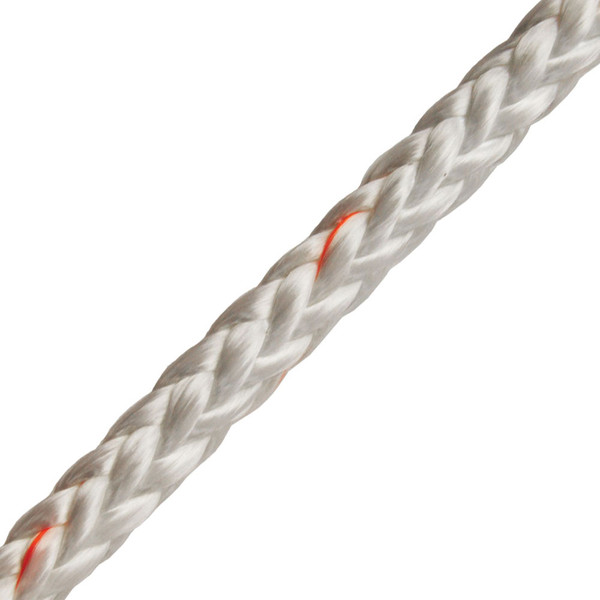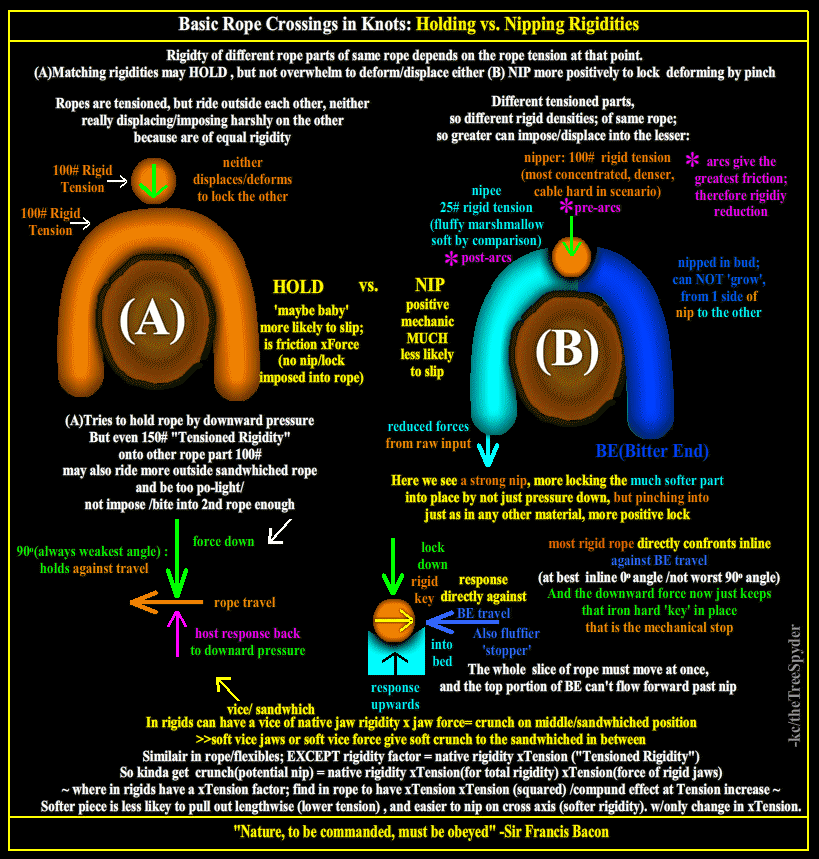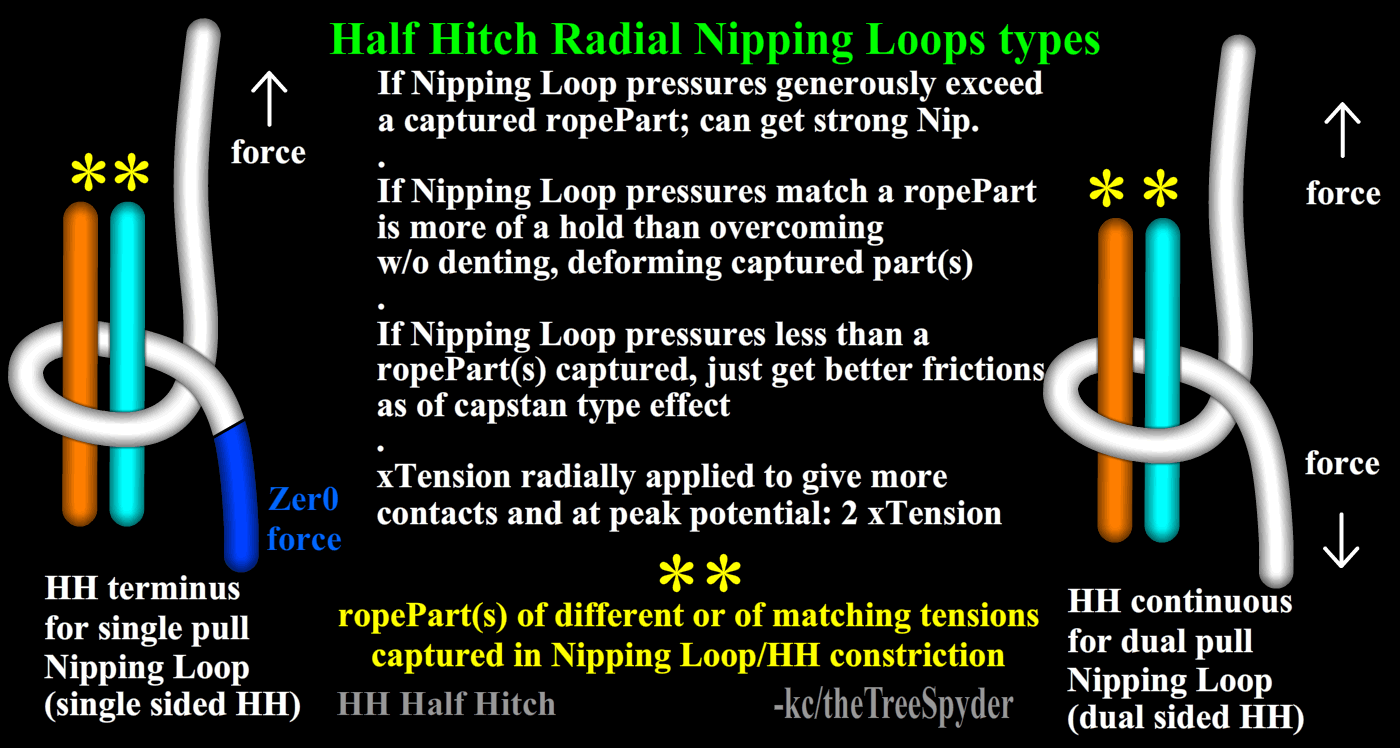Jug is more complicated, certainly, but if have a grip on Clove, then Constrictor; using this strategy in vid, places Jug usage much closer to a reality! Makes a jug carry totally upright like pulled from 4 corners of plywood with center round hole that seats under lip of jug.
.
Am fan of Constrictor too, Dbl.Constrictor for permanent bindings etc.;
(been wondering tho, isn't it ironic, that irony is everywhere?)
but i cheat and leave 2nd /last tuck under SPart loose until fully tight thru 1st;
then lock down further with 2nd.
Have made a number of hoseclamps from throw line w/Dbl.Constrictor for various shituations w/o a problem.
When really getting it tight will start from SPart , and pry under each 90degree from SPart after an arc to then sweat/swig real, real tight, chasing slack/combing thru to the securing tuck under SPart. This gets it very, very tight restriction.
.
i really like how the SPart feeds center between 2 rails, and then the Bitter End(BE) finishes same to opposite side, in this very well balanced look and feel of input and output (of especially the nip) locked securely into center between the 'rails'/ can't wander, no escape.
.
But for more nonSuperman stuff i go 1 step down, many times slipped, sometimes doubled to Bag Knot that has the same centered input/output locks very, very well again under the direct force of the SPart after all those arcs.
It does not double bury the BE under the crossing before going under SPart as Constrictor does,
BUT in trade does go more towards the apex of the SPart Primary Arc of more tension to host at that position than the more centered position of the Single Constrictor especially, very especially on a small host.
The small host , places that tuck then more immediately closer if not under the shear 2x force of the arc apex as the very best nip position ever.
And, the difference in the tightness approaching that point is calc'd by degrees from not distance from.
In a normal usage the nipping under SPart rides up over the parent 'Clove' type/signature midway crossing to get nip, but in Constrictor the nip doesn't ride up over/above the midway crossing but directly under. So less force at that point than Bag, but then Constrictor does the double bury at that point as is under midway crossing and SPart at same time. Groundline has the single tuck/nip under SPart too, but again at a higher position of more intense nip as rides over the midway crossing/best if at top of the arc apex.
.
Another related is the Groundline Hitch, pitches BE 90degrees, so a bit harder to tighten for binding.
All 3 are also great hitches, my fave/fave is Slipped Bag for utility stuff, best if the trap of nip is under primary arc directly powered by SPart.
.
i consider all 3 as evolvements of Clove, that is a Crossing Knot.
i also see Constrictor as kinda an 'outie' to about same form/strategy as Strangle as an 'innie' version, so i recognize it as part of this group/family.
.
i really like the centered, secure trapped alignment/nip of especially the BE in Constrictor/Bag, that is fairly unique here;
but seen in another EXCELLENT knot, that even puts that X trap on BE at the top/apex of the Primary Arc right off of SPart.
This is soooooooooo well engineered , no wonder we call it the Sailor's Hitch !:
Curiously, in ABoK lesson#1209 mr.Ashley quips that surgeons called the Surgeon Knot a Ligature, for it is so common to them that they would then so Naturally not speak of a Surgeon's Knot as a term anymore than a Sailor would call there everyday knot a Sailor's Knot..
After showing this super knot un-named and recommends usage for a child's swing, that we call Sailor's !
This is a hybrid of Clove type crossing knot at start, flowing to a Backhand turn at finish so 2 often used strategies as one.
i further find it related to Sailor Gripping Hitch (adds more turns between SPart and Clove like crossing to make a Friction Hitch) and then also another super knot the Pile Hitch, and it's Friction Hitch version as well of Icicle.







 to tie it mostly with one hand via 'whipping' the bight multiple times around the rope rather than laboriously wrapping the bight using both hands. Quicker that way too
to tie it mostly with one hand via 'whipping' the bight multiple times around the rope rather than laboriously wrapping the bight using both hands. Quicker that way too





